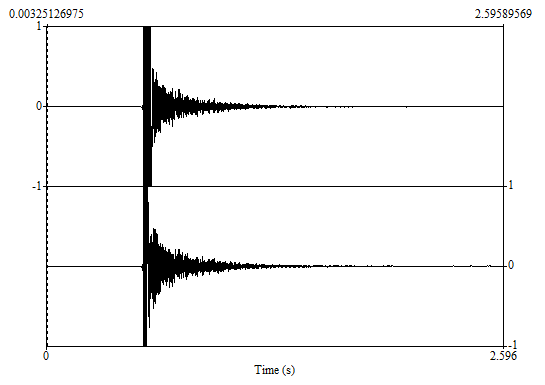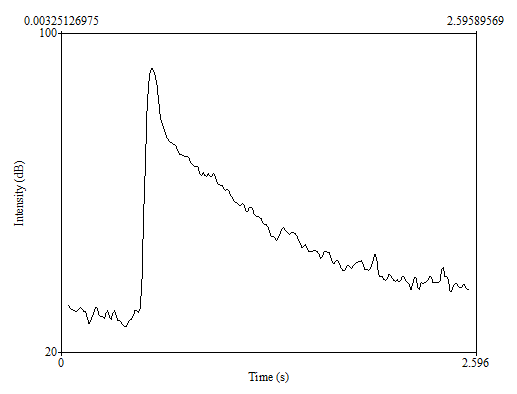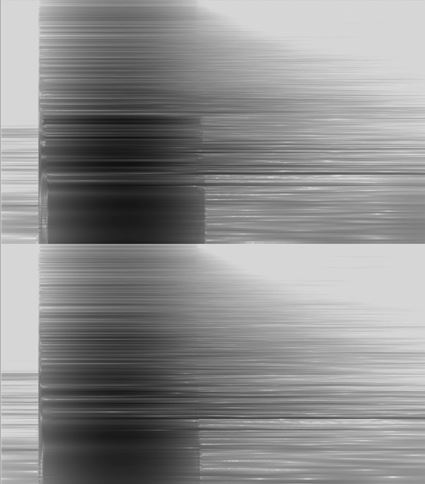Media.
Description of the space.
The acoustic space chosen was the basement of Kimberly—one of the dorms on Scripps campus. To get to the basement, one must go down a set of narrow concrete stairs. There is a laundry room directly in front of the staircase and the basement continues onward as a long hallway with various locked rooms for storage. The end of the basement hallway—furthest from the laundry room—was chosen as the location for the balloon pop.
Recording setup and recording device.
An 18” balloon was popped and recorded using a TASCAM DR-40 SOUND RECORDER. The recorder was held about one foot away from the balloon during recording. The microphone was pointed directly at the balloon where the puncture was made. This recording was made on Wednesday, February 19th 2014 at 8:00pm.
Reverberation time.
• Maximum Intensity: 91.18 dB
• Minimum Intensity: 26.52 dB
• 30dB drop after 1.07 s
• 50dB drop after 1.81 s
• Reached minimum intensity after 0.43 s
• Reached maximum intensity after 0.60 s
• Returned to pre-pop intensity level after 3.33 s
Acoustic description.
Using Audacity, the balloon pop recording was cut when the waveform diagram appeared to return to pre-popping conditions. The Audacity waveform diagram of this recording is identical to the one generated using Praat.

Graph of sound waveform generated using Praat.
However, the Visible Intensity Contour plot demonstrates that the reverberations had not quite ceased yet.

Visible Intensity Contour plot was generated using Praat.
This is evident from the spectrogram as well.

Spectrogram generated using the Audacity.
The shading before and after the pop are not quite the same shade—meaning the recording was cut a bit short. Despite the premature cut off, the long-lasting reverb tells us that the acoustic space is likely to be narrow and made of material that readily reflects sound (rather than absorbs the sound).